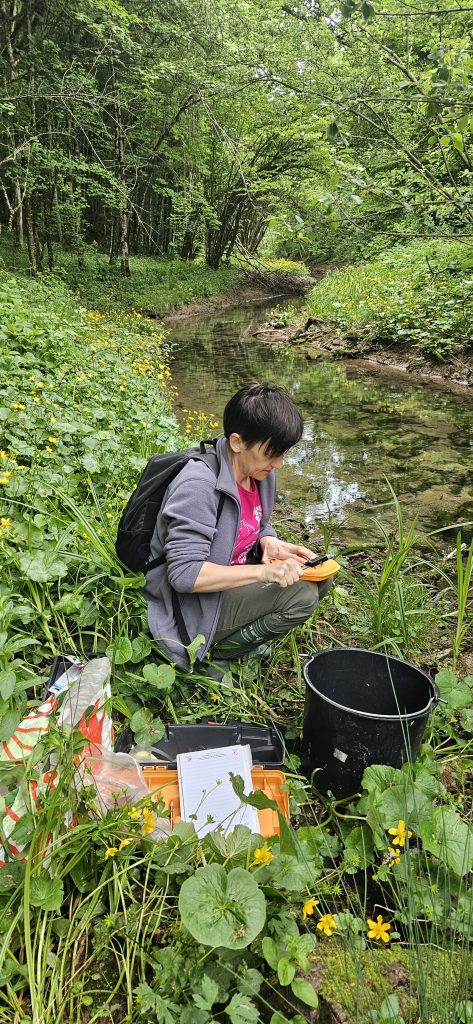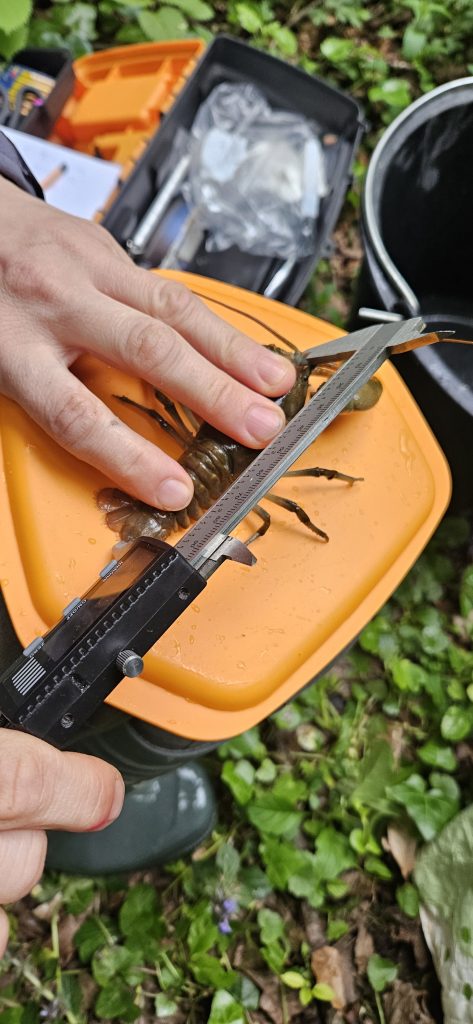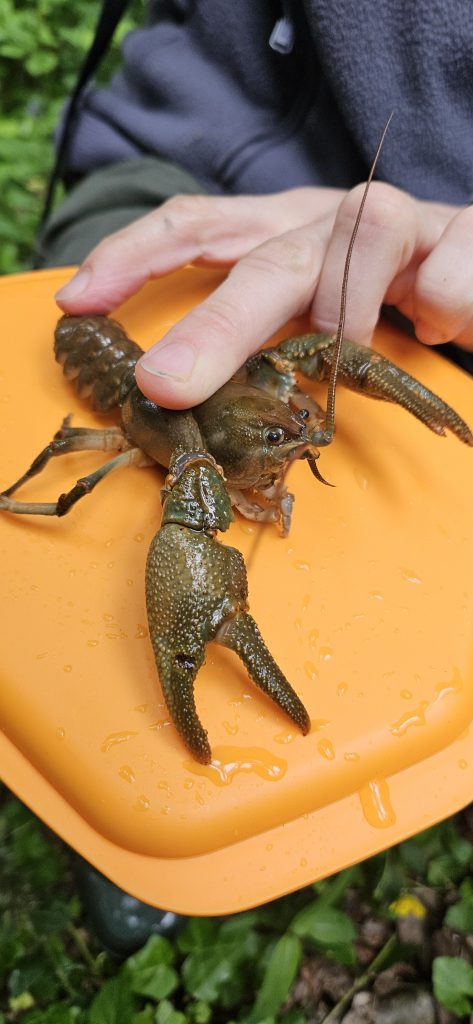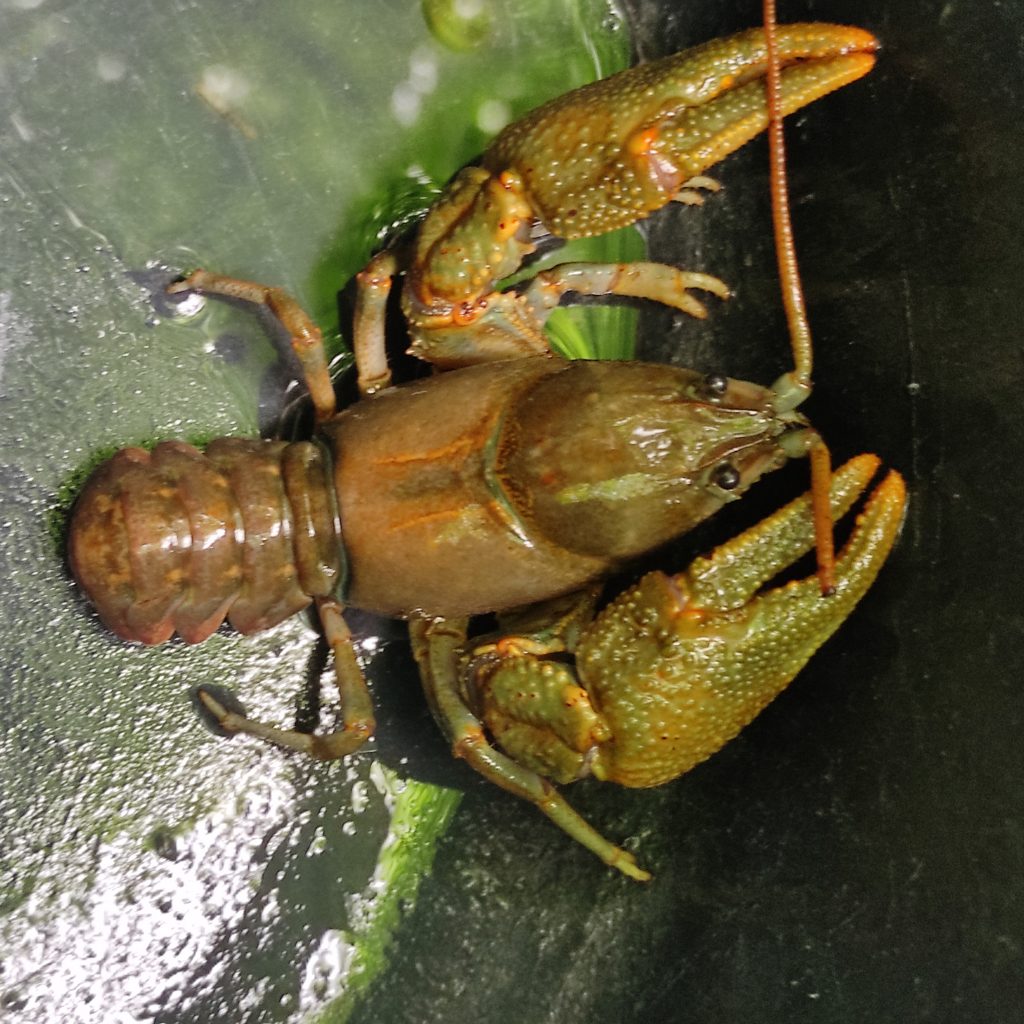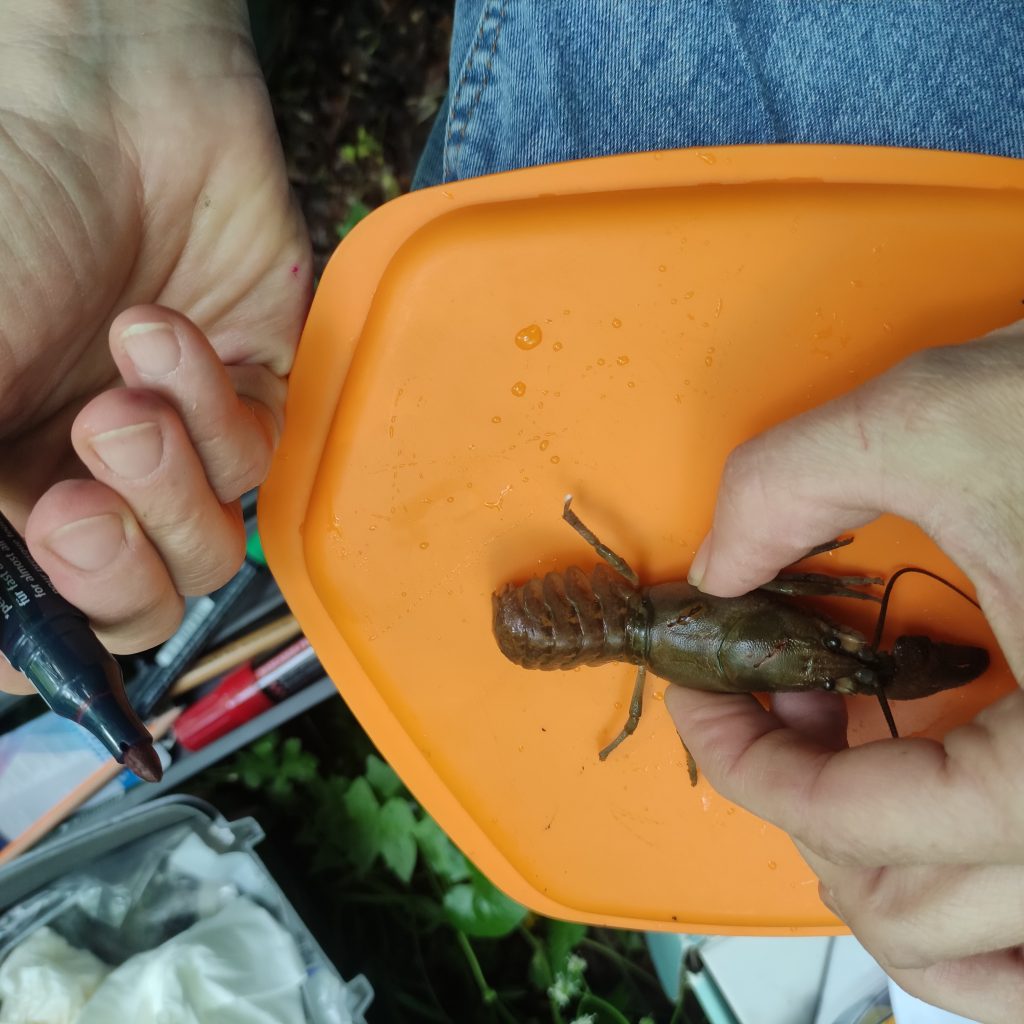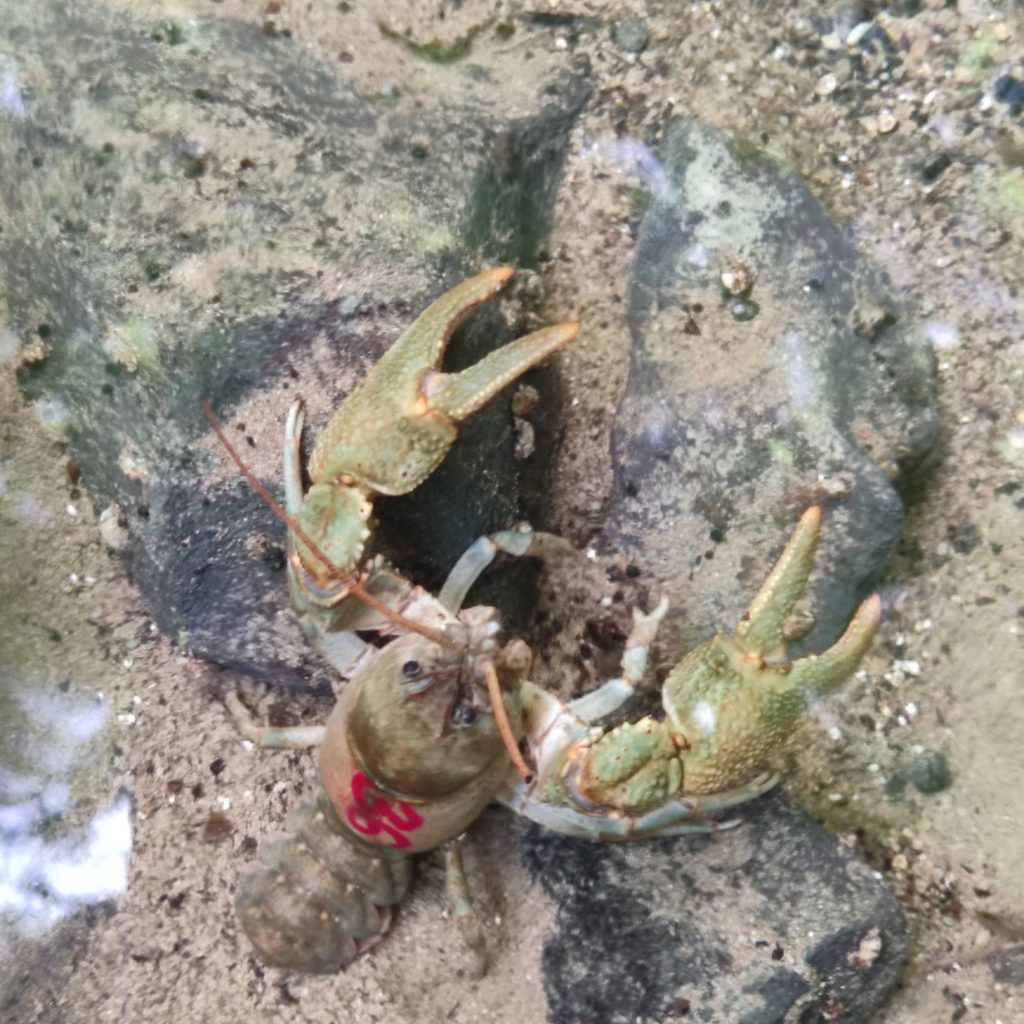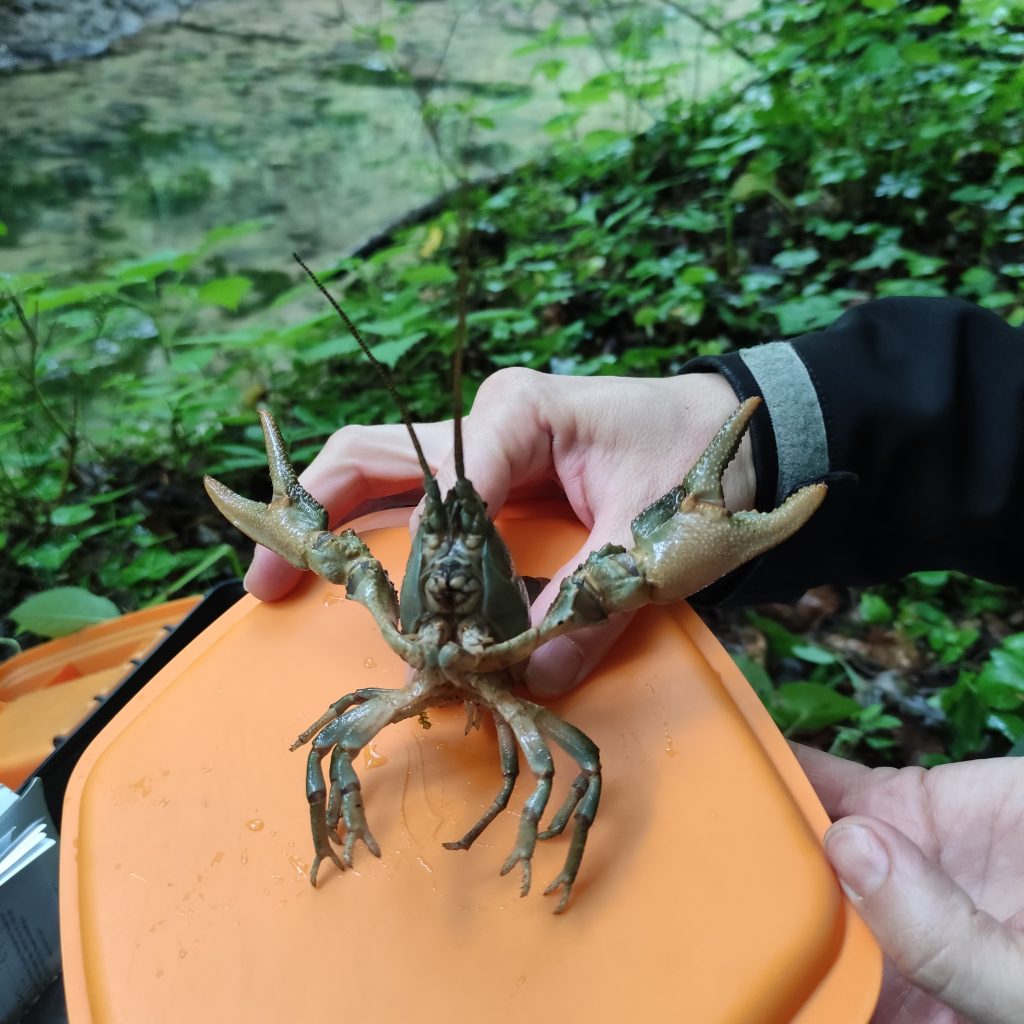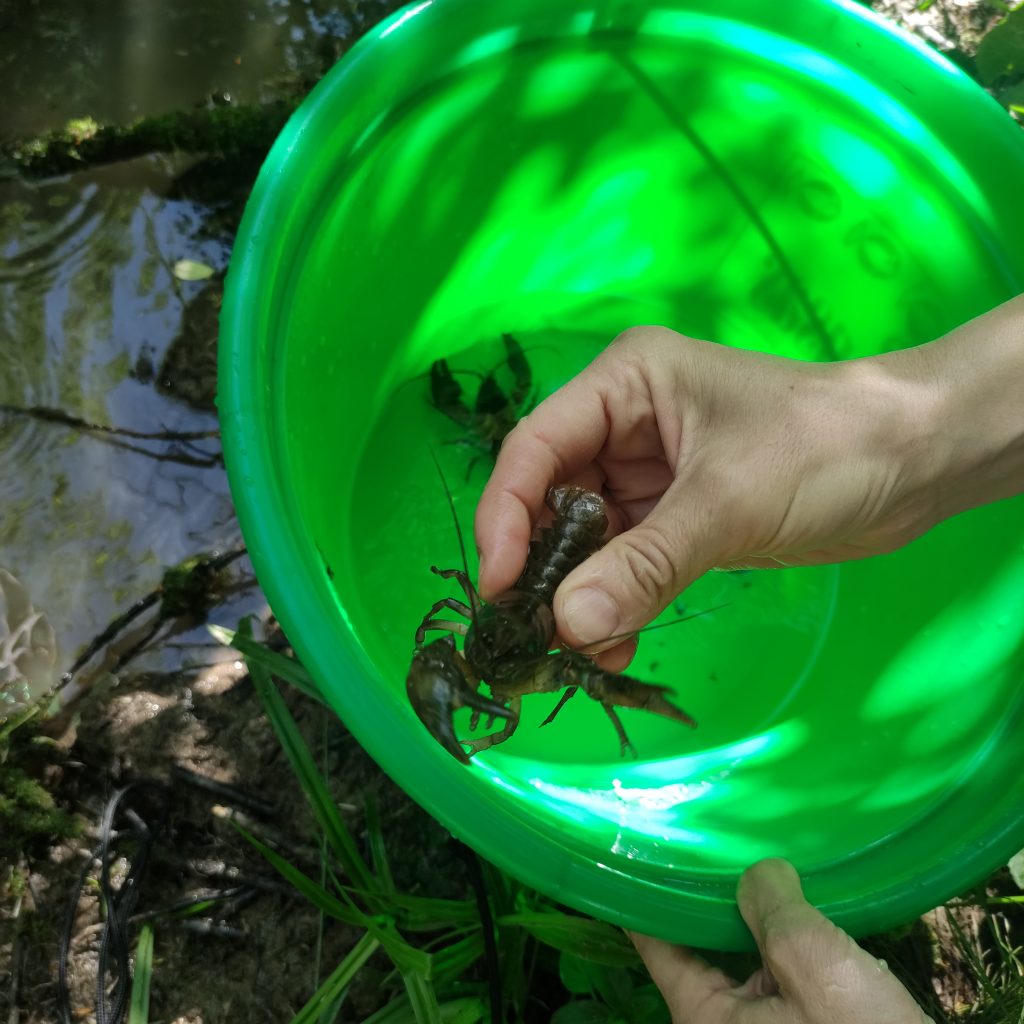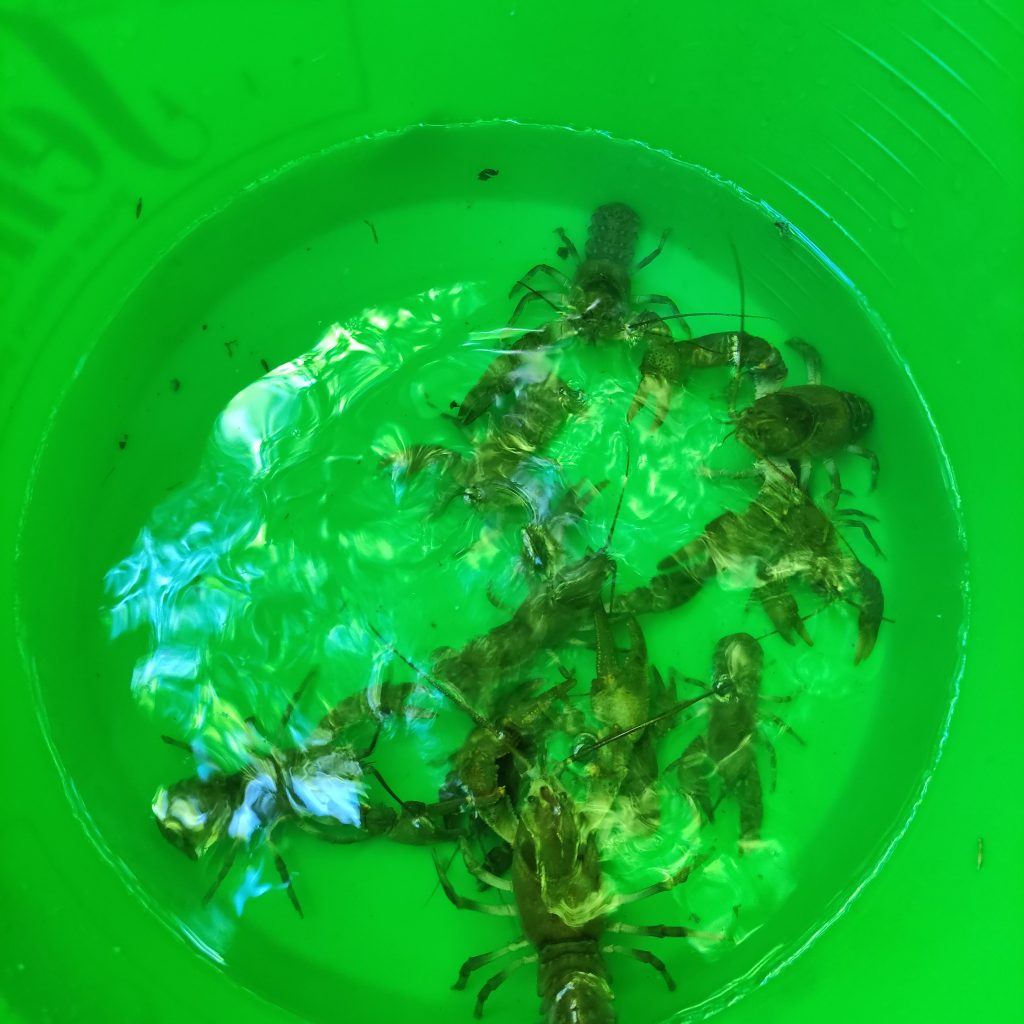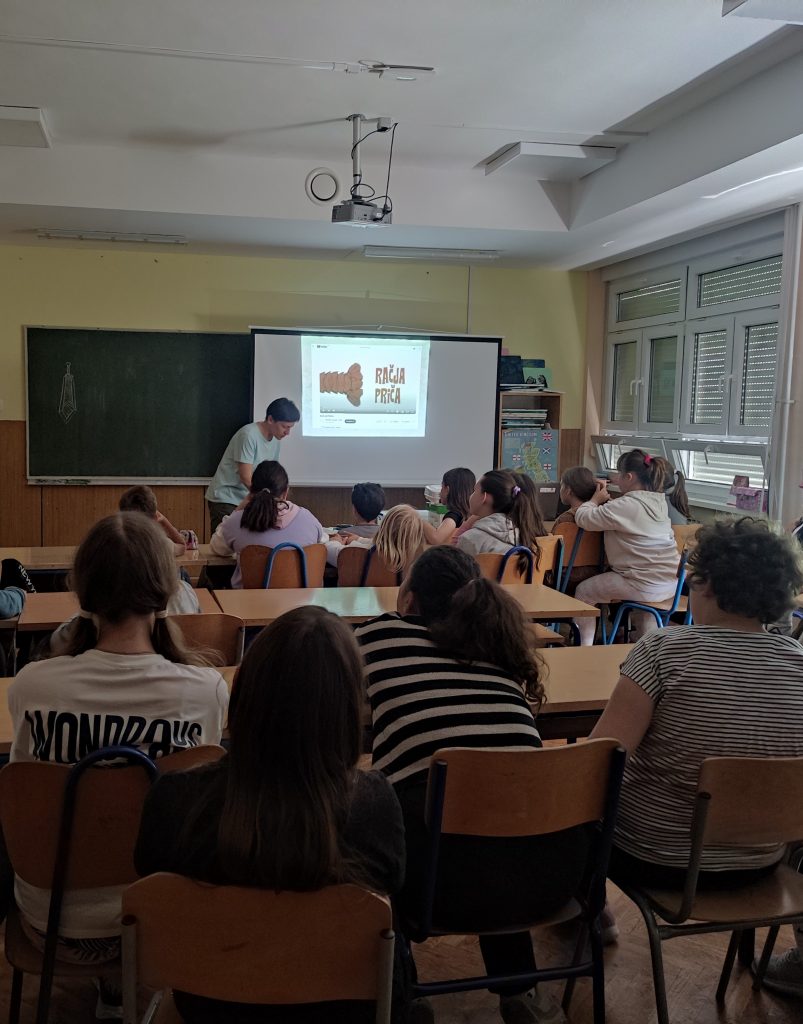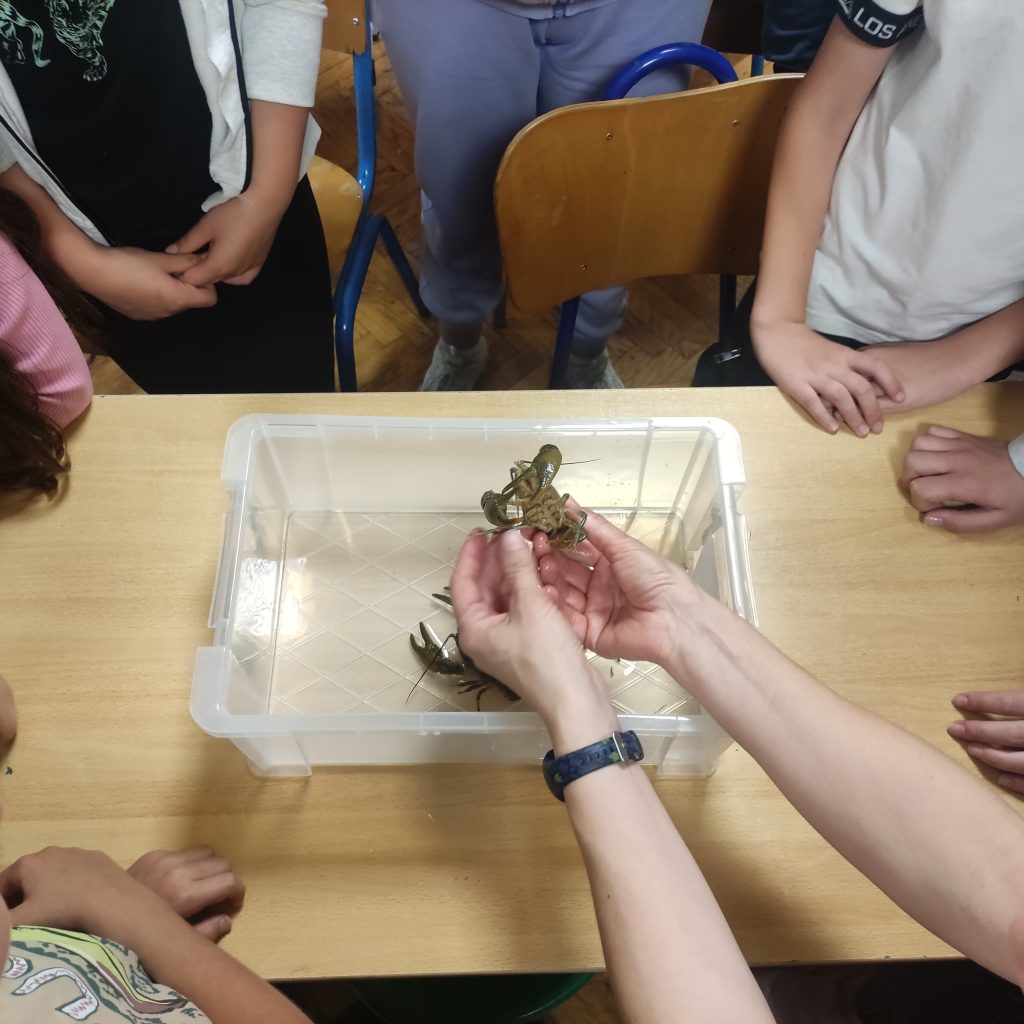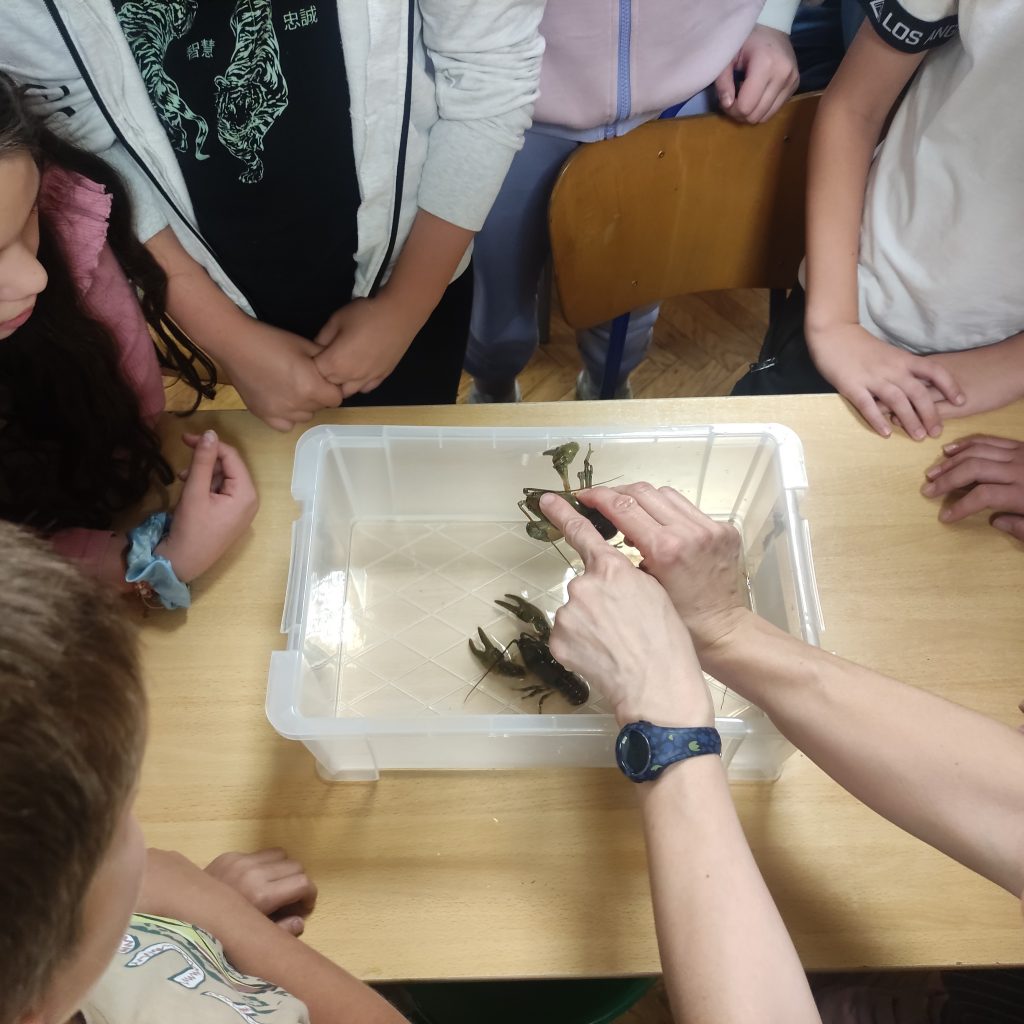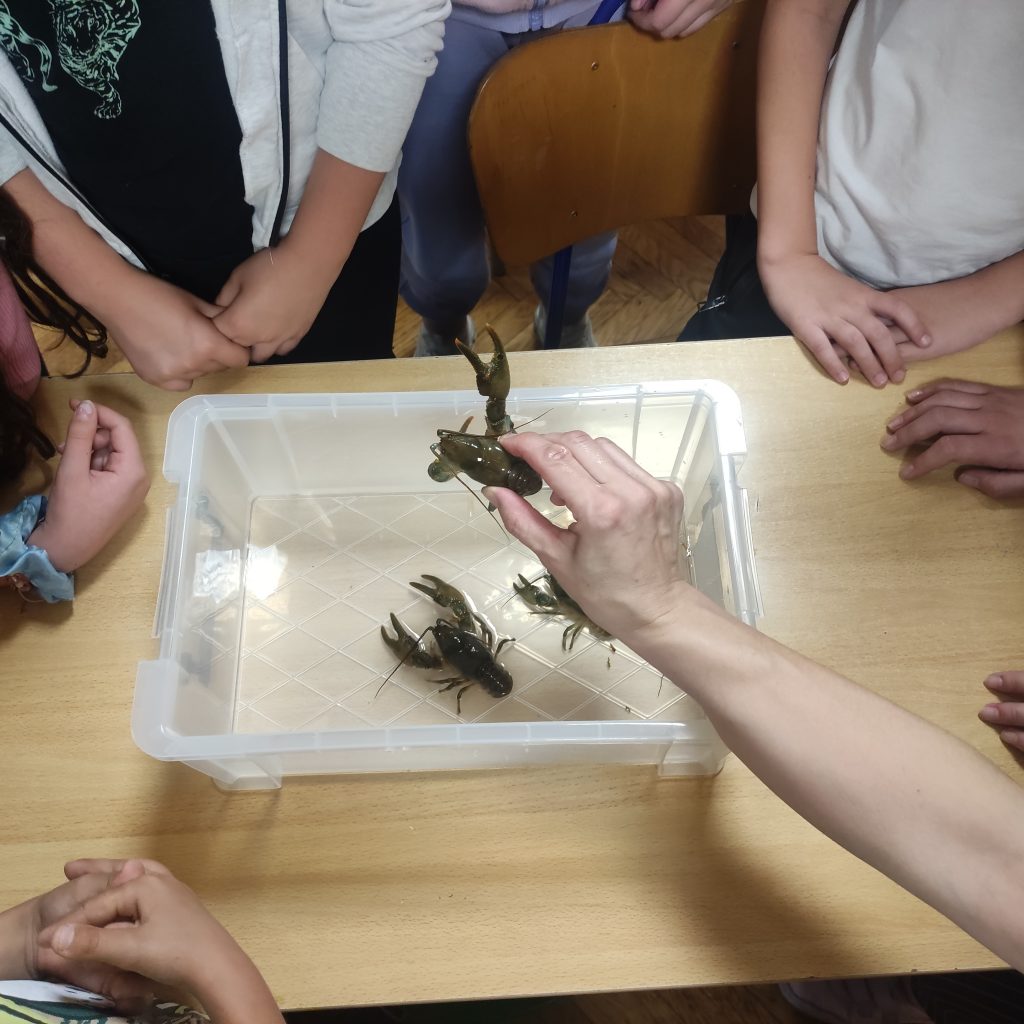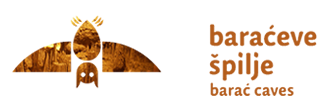In May 2024, the Public Institution conducted field research on the stone crayfish (Austropotamobius torrentium) in the Barać Caves Protected Landscape area. This research is a continuation of last year’s study aimed at assessing the population status of the stone crayfish. The field research involved a harmless method of investigation, which includes capturing crayfish using traps and by hand, marking the captured individuals, and measuring other parameters (weight, length) to determine the population status and educate the public as part of the Public Institution’s activities. Dr. Leopoldina Dakić, along with the expert and ranger service of the Public Institution, participated in the research.
To educate the public about the importance of nature protection in the Republic of Croatia and the importance of preserving native and strictly protected species, including the stone crayfish, the Public Institution, together with Dr. Leopoldina Dakić, held a workshop with students from Eugen Kvaternik Elementary School in Rakovica. During the workshop, students had the opportunity to listen to a presentation about crayfish, their development, significance, and threats. They were also introduced to a non-native invasive species, the signal crayfish, and watched an educational film titled “The Story of Crayfish” about the history of European freshwater crayfish and the problems they face due to prolonged exploitation for human consumption, pollution, and invasive alien species.
After the lecture, the students had the chance to see a live stone crayfish and showed great interest and curiosity about crayfish. At the end of the workshop, Dr. Leopoldina Dakić distributed an educational picture book titled “The Story of Jacques the Crayfish,” published by the Public Institution Natura Viva for the management of protected natural areas in Karlovac County as part of the project “Control of Signal Crayfish Populations in the Korana and Radonja Rivers,” in which the Barać Caves Public Institution and other organizations and institutions also participate.
Through education, innovation, and active participation from an early age, we can collectively work towards preserving nature protection, biodiversity, and ecosystems, ensuring a sustainable future for all of us.
You can see photos of the field research and the workshop in our photo gallery.


